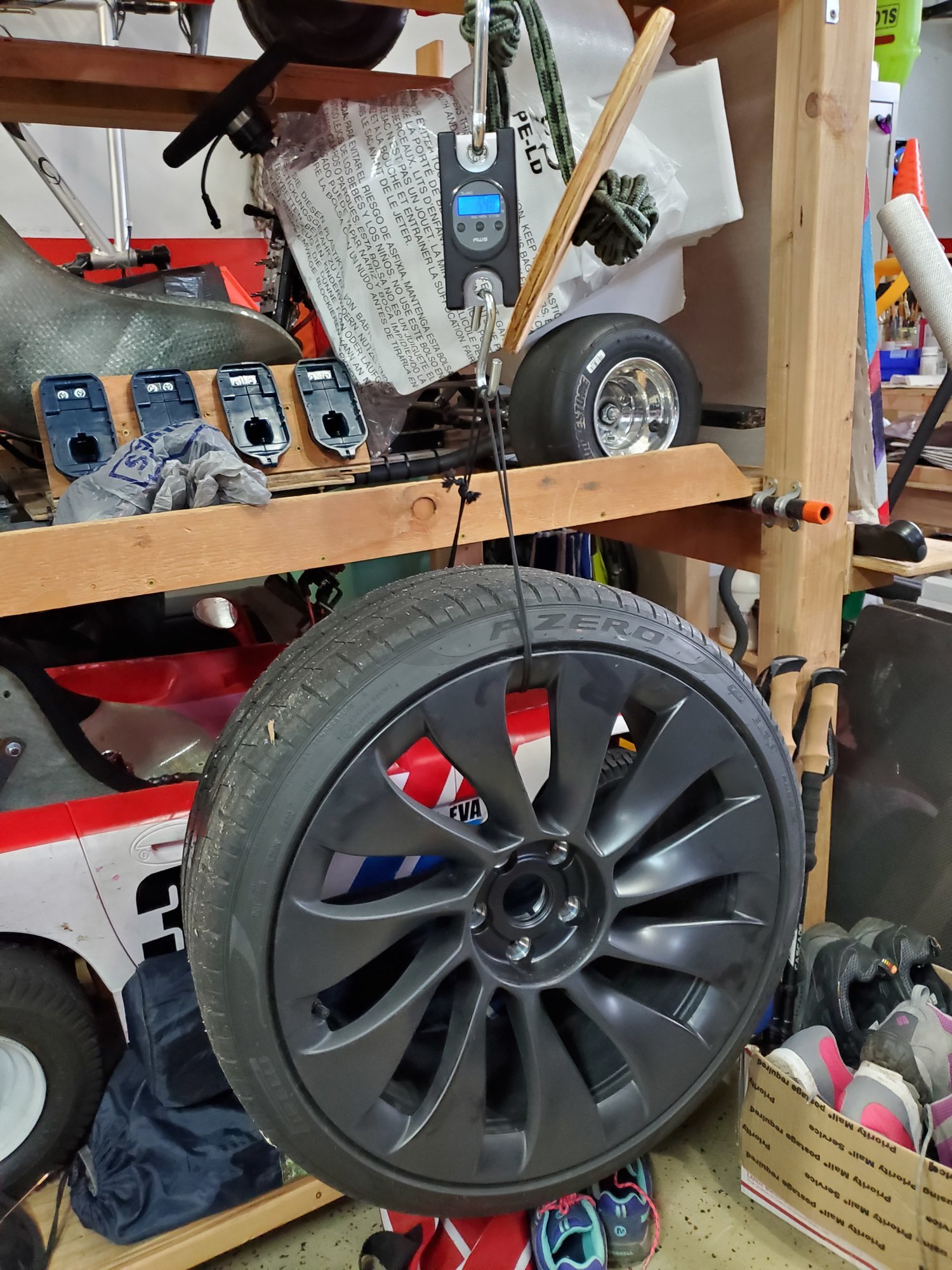Lindenwood
Active Member
I specifically said against my 28lb 255/35R20. 32+28=60.Yeah, removing the weight at 24" on a 20" wheel would be great. It's just that it's physically impossible. Yes, I am aware some of the mass is in the tire which is outside this, but the majority of the tire weight is in the tread, and that isn't changing much. A LOT of your weight savings will be far inside the 18" diameter of your 18" wheel.
You're also over-estimating the Uberturbine weight by 5 lbs:

2021 Uberturbine Wheel Weight
The other day I wanted to compare the weight of the 2021 M3P 20" Uberturbine wheel & tire to the summer wheels that I use on my 2018 LR RWD. Uberturbines: - Stock wheel w/ 2021 M3P, 20x9, +35mm ET - Stock 235/35-20 Pirelli P-Zero - 690 miles - Condition: New - No wheel lug cap - Weight: 54.5...teslamotorsclub.com
You're realistically going to save 15lbs per corner, which is 1.4%. Your MMOI will save you another 1%.
Tire diameter is not HP in the way lighter tires are. It's just changing what gear you are in which will change acceleration at different points in the speed curve, but it will always have tradeoffs.
I also specifically said going down to a 22lb, 225-width tire, which means that weight savings (as you said) is going to indeed be close to the tread, which would be at around a 24”+ radius.
I understand you are passionate about your position, but zoom out a little and understand it is highly improbably you are the only intelligent person in this thread. Maybe re-read the things you are quoting a bit more carefully before you dismiss them as “impossible.”
Of note, If you cut the tire diameter in half, such that the motors hit their speed limit out at 81mph actual speed, the actual force at the contact patch would be greater across that entire speed range until hitting 81mph. Thus, the 4% acceleration advantage I cited still stands (since we are mostly talking about 0-60 or, at most, 0-120ish acceleration).
Last edited:


